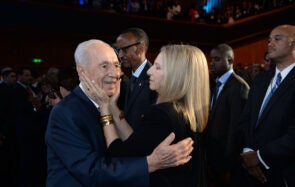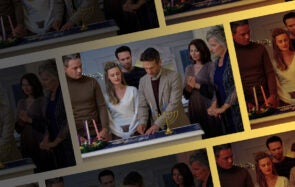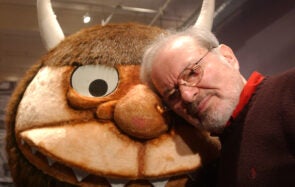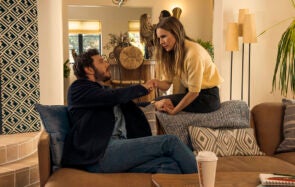Elana Gartner’s piece about “adjusting” the fairy tales she tells her son and daughter reminded me of how my poor children are forced to bear the brunt of my Master’s in Media Analysis every time they watch a movie or television show.
Most recently, my 13-year-old son and I discussed how in Les Miserables, the noble revolutionaries who only care about the plight of the poor set up their barricade and destroy the poor people’s (whom they care so much about) neighborhood. Then, while said poor people are literally on their knees cleaning up the mess, the only revolutionary left goes back to his rich grandfather’s house and proceeds to celebrate his lavish wedding without a moment of irony or even self-awareness.
My 9- and 6-year-old, on the other hand, get lectures about The Incredibles and how, while the super power-laden family laments being forced to hide their own powers because “normal people” are threatened by them, when the designated villain invents devices that mimic those powers, “The Incredibles” are deeply offended and rush out to stop him, since you can’t become a superhero through hard work or brilliance–you can only be born one. Anyone else is unworthy. (Wee bit Übermenschy, no?)
But, the big issue that comes up over and over again in children’s animation especially is the perennial edict to stick with your own kind. Even as the movie in question presumes it’s telling the exact opposite story. Think The Little Mermaid. Think Beauty and the Beast. Think Shrek. Every single tale–especially if you read their press materials, which I do, occupational hazard–believes theirs is a saga of opposites attracting, interspecies romance, and true love conquering all.
The mermaid gets her human prince, Belle weds a furry misanthrope, and the ogre settles down with a beautiful princess.
Except we have one teeny, weenie, little problem, here: The mermaid turns human. The furry misanthrope turns human. The beautiful princess is actually an ogre herself.
That would be exactly the reverse of an opposites romance, wouldn’t it?
Yes, it would.
Why do I care so much (urge to use my Master’s aside)? Well, because while my family may not be interspecies (other than the presumed Men Are From Mars/Women From Venus), we are interracial, interfaith, and intercultural, as well. I was born Jewish in the USSR, my husband African-American in Harlem, NYC.
And, from where I’m sitting and furiously typing, what cartoons are teaching my kids about how to make a “mixed” marriage work is for one partner to discard their previous identity and become exactly like the other.
That doesn’t really do it for me.
Now, on the one hand, I’m not one of those who believes that television is sending evil, subliminal messages into kids’ minds to turn them all into junk-food eating, dope fiend consumers. On the other hand, considering that television’s revenue model is based on convincing advertisers that paying to put their ad on TV will result in more sales, isn’t it a bit disingenuous to suggest that commercials hold the power to influence people’s behavior, but the stuff shown around those commercials doesn’t? (Remember, I have a Master’s Degree, which means I’ve thought about this much, much more than any human being should ever have to.)
I know that what kids watch influences what they think, whether or not they–or even the people who made the product–are conscious of the message being sent. That’s why I don’t ban those movies from our home–I merely insist we talk about them. And talk about them. And talk about them. (Want to shrink screen-time for your kids? Turn their favorite movie into a Teaching Moment! Works every time.)
And if you’re wondering whether there’s a kids’ cartoon out there with a message I approve of about blending different cultures into a single family, consider The Prince of Egypt.
Yup, the guy from “Exodus,” himself.
In the Dreamworks movie, Moses meets Zipporah, a Midianite, marries her, and proceeds to live in the desert with her family, following their ways and tending their sheep. Then, when the sheep tending is interrupted by some unexpected bush burning and Moses has to head back to Egypt in order to let his people go and all that, Zipporah crosses the Red Sea with him. Now that’s a functional mixed marriage I’m ready to emulate!
Who would have guessed that an Old Testement inspired story about two humans would succeed where Man and Mermaid, Girl and Beast, and Ogre and Princess failed?







